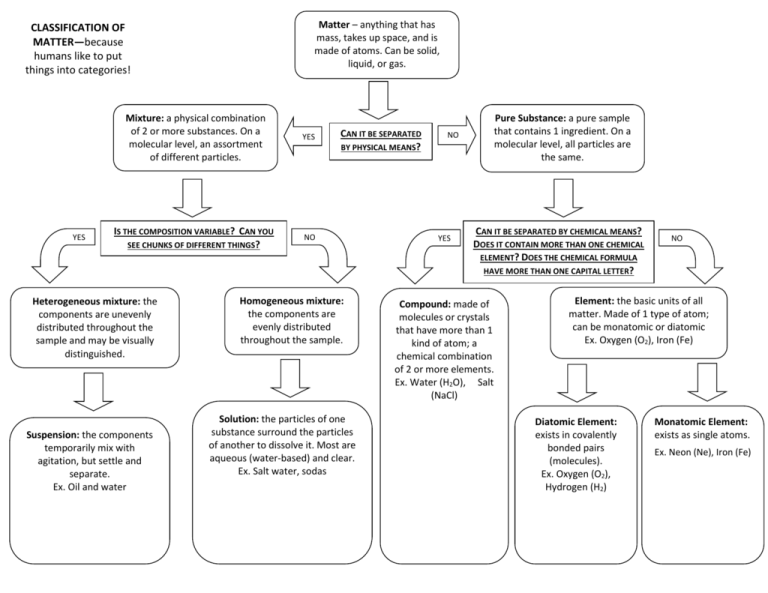What is Matter?
Matter is anything that has weight and takes up space. Everything you can see and touch is made up of matter. Matter exists in three main forms: solids, liquids, and gases. It also has properties that we can describe through density, solubility, conductivity, magnetism, etc.
Matter makes up the air we breathe, the ground we walk on, the food we eat and the animals and plants that live around us. Even our own human bodies are made of matter!
Classification of matter with examples
Key Points
- Matter can be broken down into two categories: pure substances and mixtures. Pure substances are further broken down into elements and compounds. Mixtures are physically combined structures that can be separated into their original components.
- A chemical substance is composed of one type of atom or molecule.
- A mixture is composed of different types of atoms or molecules that are not chemically bonded.
- A heterogeneous mixture is a mixture of two or more chemical substances where the various components can be visually distinguished.
- A homogeneous mixture is a type of mixture in which the composition is uniform and every part of the solution has the same properties.
- Various separation techniques exist in order to separate matter, including include distillation, filtration, evaporation and chromatography. Matter can be in the same phase or in two different phases for this separation to take place.
Key Terms
- mixture: Something that consists of diverse, non-bonded elements or molecules.
- element: A chemical substance that is made up of a particular kind of atom and cannot be broken down or transformed by a chemical reaction.
- substance: A form of matter that has constant chemical composition and characteristic properties. It is composed of one type of atom or molecule.
